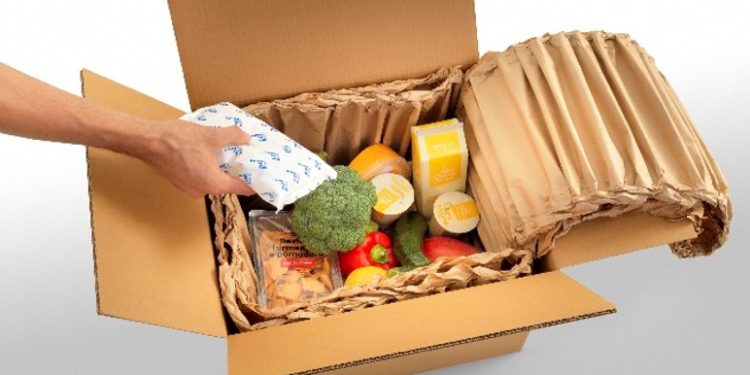In this article, we will explore the importance of thermal packaging in safeguarding products during transit. Thermal packaging is crucial for maintaining the quality and safety of temperature-sensitive goods, ensuring they arrive at their destination in optimal condition.
Introduction
Thermal packaging plays a pivotal role in the logistics and shipping industry, particularly for products that are sensitive to temperature changes. It incorporates various materials and technologies designed to provide insulation, durability, and protection against temperature fluctuations.
The primary objective of thermal packaging is to maintain a stable environment for the contents, preventing spoilage, degradation, or loss of efficacy. This is especially vital for industries such as pharmaceuticals and food distribution, where even minor temperature deviations can lead to significant quality issues.
The Crucial Role of Insulation in Thermal Packaging
How Does Insulation Maintain Product Integrity?
Maintaining a consistent temperature is essential for the integrity of temperature-sensitive products like biological samples, medications, and perishable foods. Insulation provides a thermal barrier that reduces the exchange of heat between the product and its external environment, thus safeguarding its efficacy.
What Are the Types of Insulation Used in Thermal Packaging?
Various types of insulation materials are used in thermal packaging. These include polyurethane foam, which is known for its excellent thermal resistance, and expanded polystyrene, which is lightweight and cost-effective. Additionally, vacuum insulated panels (VIPs) offer superior insulation by minimizing heat transfer through innovative design.
Durability and Protection Against Physical Damage
Why Is Durability Important for Product Safety?
Durability is a critical factor in ensuring that products arrive undamaged. Robust thermal packaging protects the contents from physical impacts, vibrations, and compression that can occur during transit. This is particularly important for fragile items or those with stringent handling requirements.
How Does Thermal Packaging Minimize Physical Damage During Transit?
Thermal packaging minimizes physical damage using materials like corrugated cardboard, high-density polyethylene, and reinforced plastics. These materials provide structural integrity and shock absorption, which are essential for protecting the contents against mishandling or environmental stressors.
Guarding Against Temperature Fluctuations
How Does Thermal Packaging Protect Against Temperature Changes?
Thermal packaging employs various strategies to protect against temperature changes. These include phase change materials (PCMs) that absorb and release thermal energy at specific temperatures, acting as heat sealers and ensuring that the internal temperature remains stable. Additionally, reflective barriers are used to deflect external heat away from the package.
What Are the Risks of Temperature Fluctuations?
Temperature fluctuations pose significant risks to temperature-sensitive products. For instance, medications that are exposed to unsuitable temperatures may lose their potency, leading to reduced effectiveness. Similarly, food products subjected to temperature variations can spoil, posing health hazards to consumers.
The Benefits of Thermal Packaging
Ensuring Product Quality and Safety
How Does Thermal Packaging Prevent Product Spoilage?
Thermal packaging prevents product spoilage by maintaining the necessary environmental conditions for freshness and quality. For example, fresh produce, dairy products, and meats require constant refrigeration to prevent bacterial growth. Thermal packaging solutions ensure these items remain within safe temperature ranges throughout transit.
Why Is Thermal Packaging Essential for Pharmaceuticals?
The pharmaceutical industry relies heavily on thermal packaging to maintain the efficacy of medications. Certain drugs and vaccines need to be stored within very narrow temperature ranges. Thermal packaging ensures these products do not experience harmful temperature fluctuations, which could compromise their safety and effectiveness.
Innovations in Thermal Packaging
Smart and Sustainable Solutions
How Do Smart Technologies Enhance Thermal Packaging?
Advancements in technology have led to the development of smart thermal packaging solutions. These include Internet of Things (IoT) enabled packaging and smart sensors that provide real-time temperature monitoring and alerts. Such innovations allow for better control and management of the conditions in which products are stored and transported.
What Role Does Sustainability Play in Modern Thermal Packaging?
Sustainability is an increasing focus within the thermal packaging industry. Companies like Tempack are leading the way by developing eco-friendly thermal packaging solutions. These include recyclable materials and packaging designs that reduce environmental impact. Sustainable practices not only benefit the environment but also appeal to environmentally conscious consumers.
Guidelines for Effective Use of Thermal Packaging
Understanding Specific Product and Transit Requirements
What Factors Should Be Considered During Packaging Design?
When designing thermal packaging, it is essential to consider several factors. These include the type of product, its temperature sensitivity, the duration of transit, and the environmental conditions it will be exposed to. By understanding these requirements, appropriate insulation and protective materials can be selected.
How Important Is Personnel Training in Ensuring Packaging Effectiveness?
Personnel training is vital for the effective use of thermal packaging. Staff must be knowledgeable about the handling, storage, and transportation requirements of temperature-sensitive products. Proper training ensures that all protocols are followed, minimizing the risk of temperature deviations and product damage.
How Should One Monitor and Validate Temperature Integrity?
Monitoring and validating the temperature integrity of thermal packaging involve using temperature data loggers and monitoring devices. These tools track the temperature conditions throughout the transit process, providing measurable data that helps validate the effectiveness of the thermal packaging and identify any potential issues.
In conclusion, thermal packaging is an indispensable component of the supply chain for temperature-sensitive products. By providing insulation, durability, and protection against temperature fluctuations, thermal packaging ensures that products remain safe and effective from the point of origin to their final destination. Companies like Tempack are at the forefront, offering innovative and sustainable packaging solutions that meet the evolving needs of the market.











































































